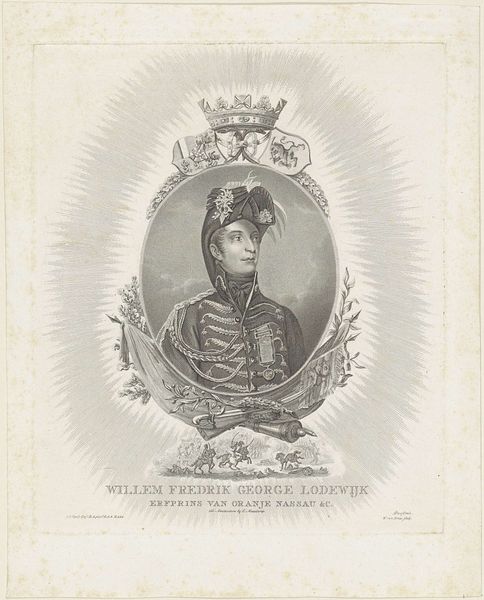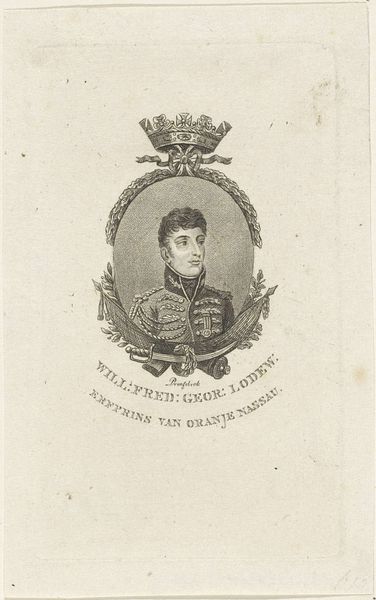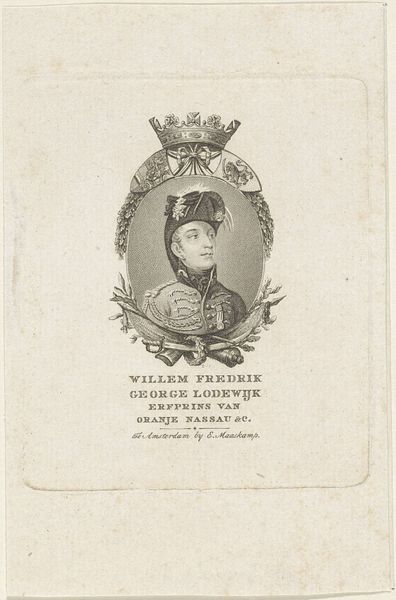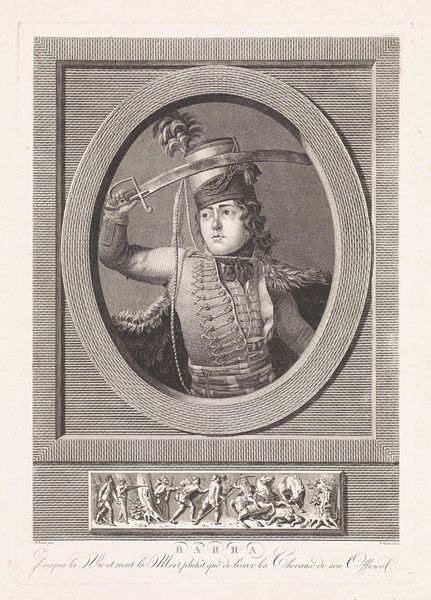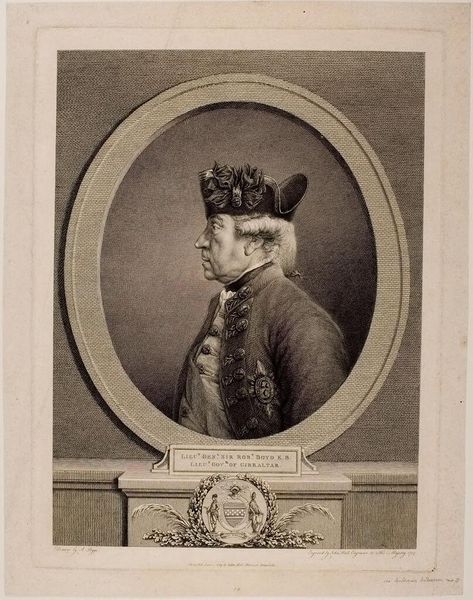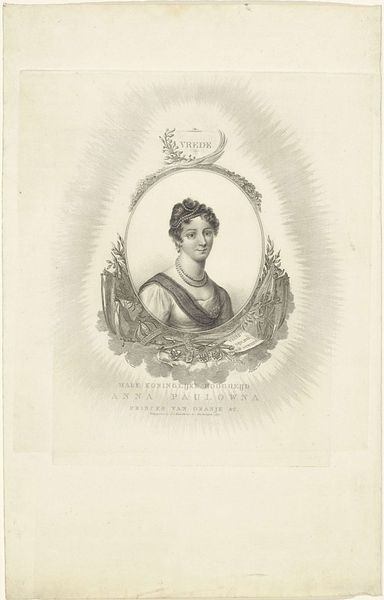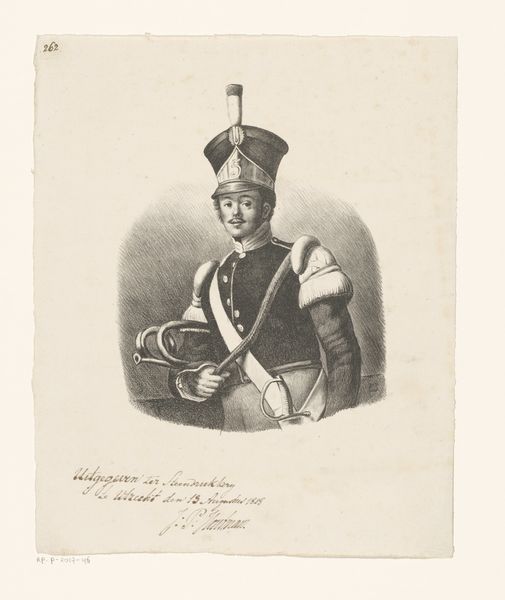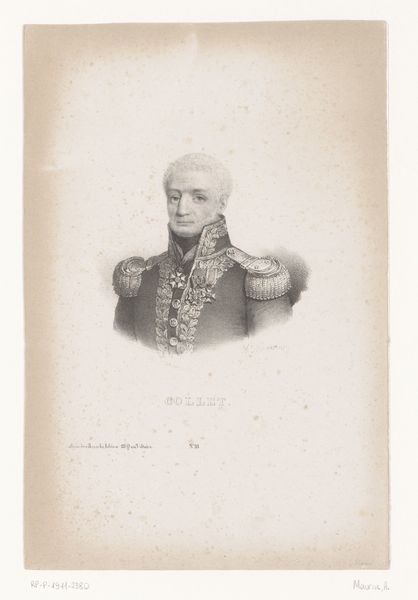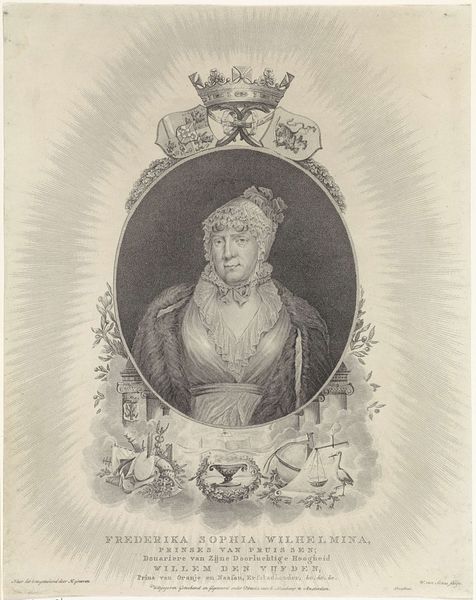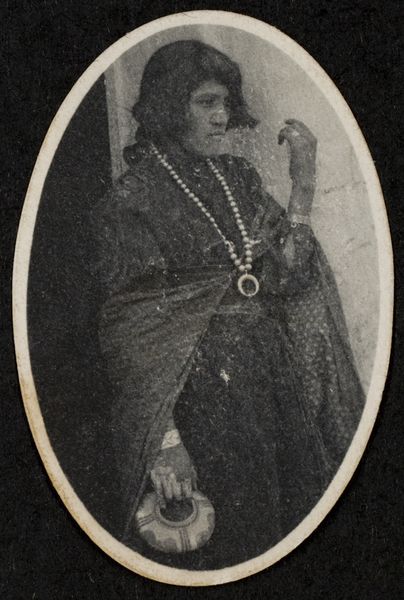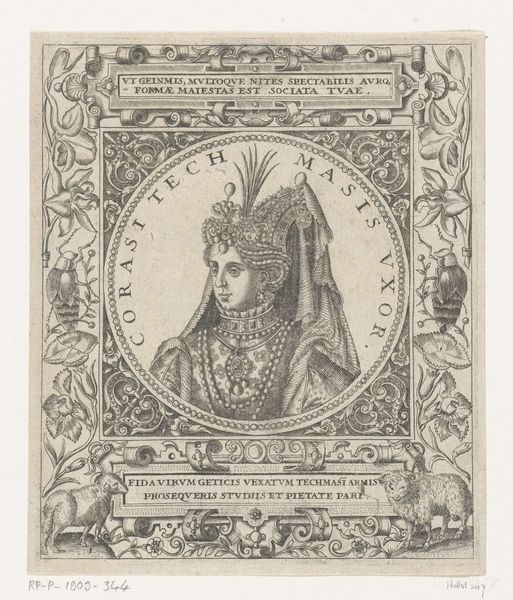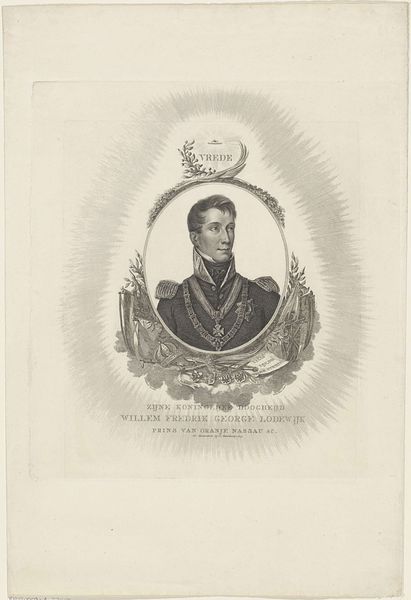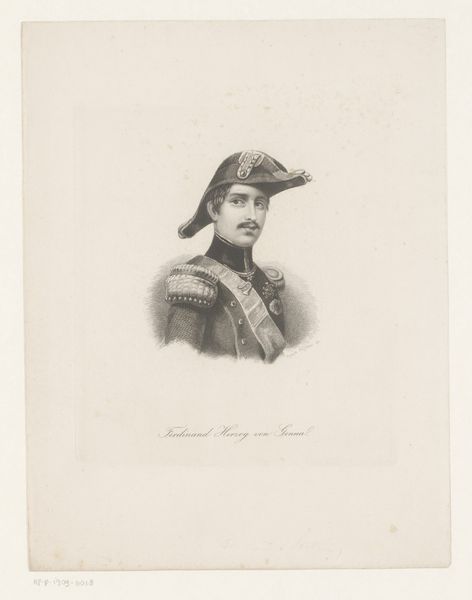
etching, engraving
#
portrait
#
pencil drawn
#
neoclacissism
#
etching
#
old engraving style
#
history-painting
#
engraving
Dimensions: height 261 mm, width 210 mm
Copyright: Rijks Museum: Open Domain
Curator: This is a portrait of Willem II, King of the Netherlands, an engraving created sometime between 1813 and 1834. The piece resides here in the Rijksmuseum collection. Editor: Immediately striking, isn't it? There's such deliberate visual language. The crisp lines, the military imagery, all creating a feeling of formality and power. The crown and the battle scene at the bottom really amplify that sentiment. Curator: Indeed. Engravings like these played a crucial role in shaping public perception during the era of nation-building. Willem II, as a national hero, needed a strong visual identity. The inclusion of those battle scenes isn't just decorative; it’s a direct reference to his military prowess. Editor: Precisely! It’s interesting to unpack the weight of the symbolism. The oval frame surrounding the portrait is adorned with laurel leaves, emblems of victory and honor—classical iconography used to subtly legitimize his rule and connect him with an idealized past. And notice the small scene depicted below? What historical event does it reference, do you think? Curator: My suspicion would be an echo of the Battle of Waterloo and Prince Willem’s involvement; the imagery would likely appeal to national pride, reminding viewers of Dutch contributions to European security after Napoleon's defeat. Editor: I agree completely. And look closely at Willem's expression. Despite the regalia and martial context, there is a youthfulness and vulnerability in his gaze, a subtle suggestion of character beyond the crown. It provides psychological intrigue. Curator: Good observation. What's fascinating to me is the interplay between personal portrayal and public image here. Willem isn't simply rendered as a ruler, he's fashioned into a figurehead representing national aspirations and anxieties during a period of significant change. Think about this being displayed in civic spaces. Editor: This is very thought provoking. The work becomes more than just a portrait of a man; it turns into a potent emblem of an evolving national identity—layered with symbol, history, and perhaps a bit of wishful thinking. Curator: It really allows us to reflect on how power and national narratives are constructed, and how visual art became entangled with this. Editor: Definitely something to mull over. These historical symbols have the power to spark conversation, all these years later.
Comments
No comments
Be the first to comment and join the conversation on the ultimate creative platform.
